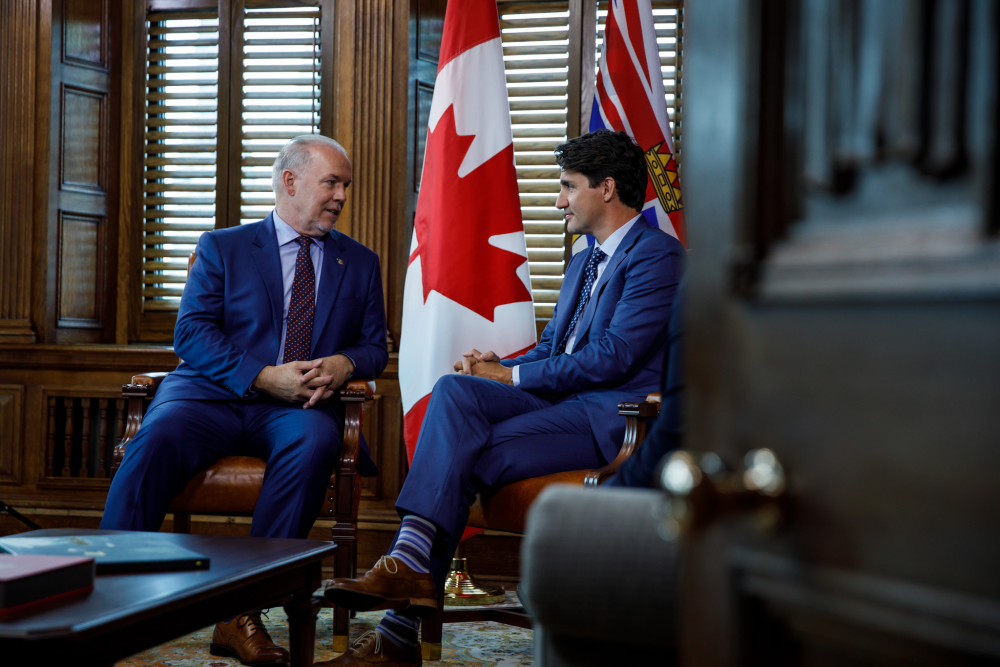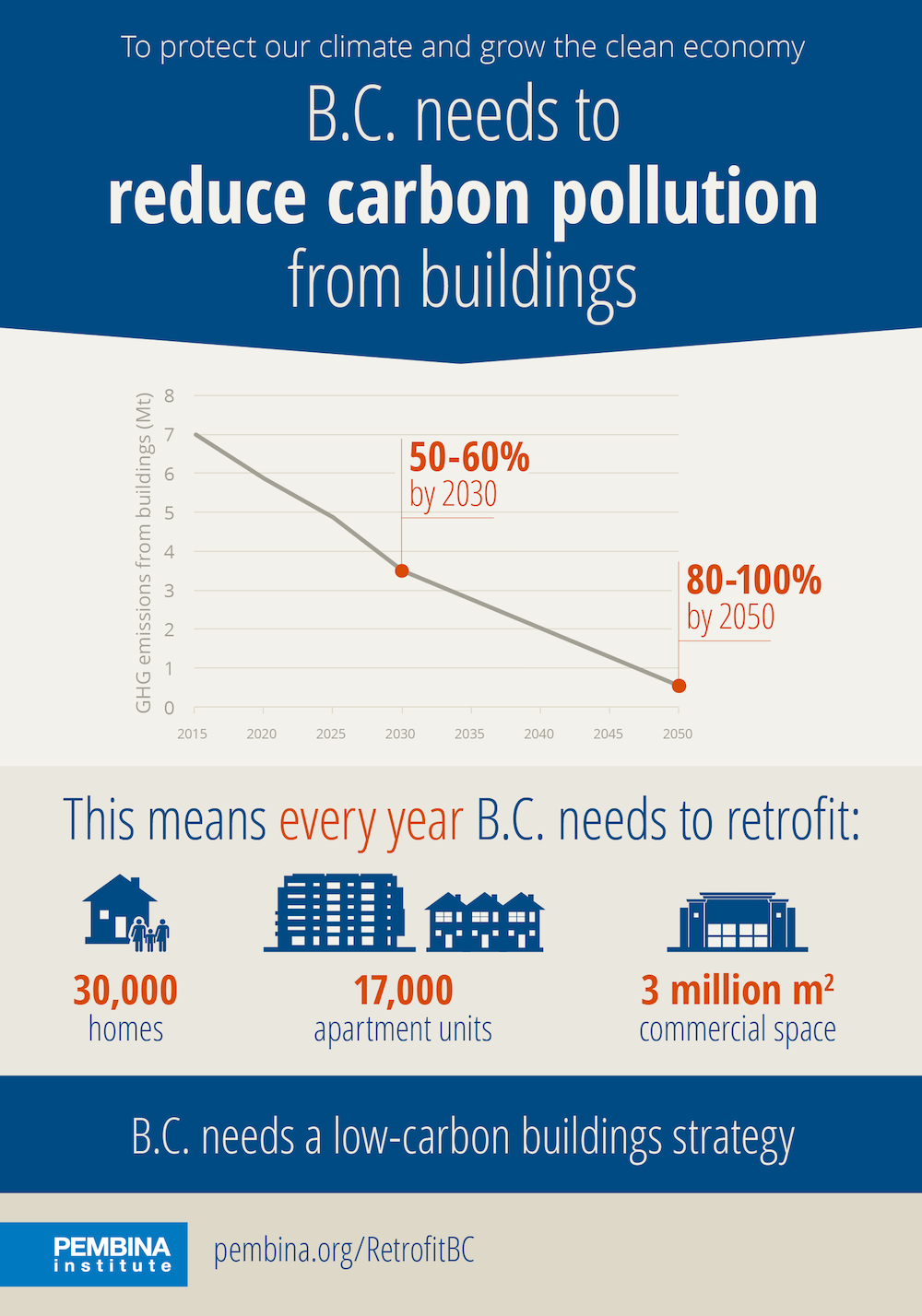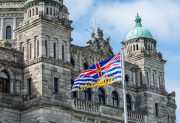For every one of us hoping to see fresh thinking on how Canada can grow its economy while fighting human-caused climate change, the first year of B.C. premier John Horgan’s government represents a promising start.
Over the past year, the government has taken action by committing to refresh B.C.’s climate strategy to get us back on track to reducing carbon pollution (by 40 per cent from 2007 levels by 2030) and a return to strengthening our carbon tax with annual rate increases. Although B.C. is responsible for 10 per cent of Canada’s overall climate-damaging pollution, our province’s example counts for more than you may think.
B.C.’s steps forward come as climate action and putting a price on carbon pollution become increasingly touchy subjects in Canada. With the possibility of political winds continuing to shift across the country over the next two years, B.C. has the opportunity — and responsibility — to demonstrate to the rest of Canada how policies to secure a clean and prosperous economy can be implemented successfully.
The B.C. government has promised to deliver this fall a climate solutions and clean growth strategy. A strong plan needs to lower carbon pollution and incentivize clean innovation in the building, transportation, and industrial sectors. What follows are some of the challenges and opportunities the strategy should address.
The 2015 climate plan stipulated that, by 2032, all new homes and buildings will be built to net-zero energy standards, but lacked details on how we’d get there. This time around, we expect the B.C. Energy Step Code will form the regulatory basis for the shift — and it could be a blueprint for other provinces. In addition, for us to be certain buildings are on track to meet our climate goals, we need to limit their carbon pollution. The City of Vancouver’s Zero Emissions Building Plan offers a good example of how this can be done effectively.
Improving newly constructed buildings is only the tip of the iceberg. Eliminating carbon pollution from existing homes and buildings should be B.C.’s next mega-project. To achieve this, B.C. needs to upgrade 30,000 houses, 17,000 apartments, and 3 million square metres of commercial space every year for the next two decades. To accelerate innovation, we are part of an initiative in B.C. to adapt the Dutch Energiesprong model of mass retrofitting social housing to net-zero energy standards.
Electric vehicle sales and lower-carbon fuels also deserve a boost. B.C. is one of only three provinces that provide incentives. (Ontario, until recently, and Quebec are the others.) La belle province is the first in Canada to have a minimum sales requirement for zero emissions vehicles, and B.C. should be next. If B.C. takes this next step, we will join California as the only jurisdictions in North America with requirements for both zero emissions vehicles and low carbon fuels.
We also need a strategy to reduce carbon pollution from freight, which is eclipsing any gains we’re making on passenger-vehicle emissions. Carbon pollution associated with the movement of goods has increased 205 per cent since 1990 in Canada. Tackling emissions from this sector calls for multi-jurisdictional collaboration and a rethink of our transportation system.
The provincial government has been very supportive of the development of a liquefied natural gas (LNG) export industry in B.C. Yet the natural gas sector is already B.C.’s biggest source of industrial carbon pollution — and the sector has a methane leak problem. Methane is a more potent climate pollutant than carbon dioxide. B.C. is currently developing methane regulations to comply with federal requirements. We can look to several U.S. states for examples of the best practices that have been implemented, essentially eliminating venting from production and transportation.
Unless methane leakage is regulated and the production and compression of LNG is powered by clean electricity instead of burning gas, the LNG industry could comprise nearly 75 per cent of B.C.’s 2050 carbon budget. That would place a disproportionate burden on other sectors to offset those emissions. B.C. must take effective measures to rein in the gas sector’s climate pollution.
This is far from an exhaustive summary of the kind of strong climate action B.C. needs. To evaluate the forthcoming climate strategy, we’ll need to dig into the numbers to see whether the sum of actions clears a pathway to achieving our carbon budget.
We’ll also be looking to the government to draft an energy roadmap. This will be the framework for transitioning the province’s industries to low carbon and identifying the pathway to meeting the province’s substantial future clean energy needs. The roadmap will be key to credible implementation of the climate strategy. The new Emerging Economy Task Force and innovation commissioner should help identify ways to diversify and future-proof B.C.’s economy.
An effective and integrated B.C. climate strategy that accelerates the low-carbon energy transition, cuts carbon pollution, and delivers economic growth would be a welcome model for the rest of Canada and a legacy for future generations.
Karen Tam Wu is the B.C. managing director at the Pembina Institute and a member of B.C.’s Climate Solutions and Clean Growth Advisory Council. Learn more: www.pembina.org.
This op-ed originally appeared in the Vancouver Sun on July 31, 2018 (page A9).







